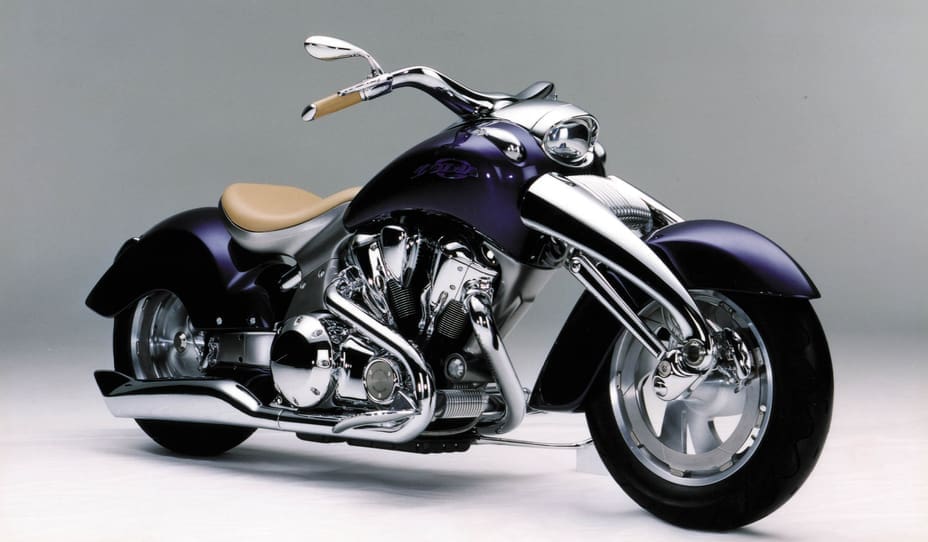The Honda NRX1800 Valkyrie Rune, or as some people, mostly Druids, call it, the Rune, is one of those motorcycles that makes you pause and wonder what on earth the engineers were thinking.
Then, after some contemplation, you realise they were probably just having a bit of fun.
The Rune is Honda at its most extravagant — an exercise in pure mechanical indulgence, with a touch of whimsy and an utter disregard for financial prudence. Completely unlike Honda when it’s wearing its sensible pullover.
There’s one coming up for sale soon, at Manor Park Classics auction on 4-5 April 2025, a 2007 model on sale with an estimate of £20,000 to £22,000.
Where the Rune comes in
Honda is well known for making sensible, reliable motorcycles. They’re the sort of machines that get you from A to B without any fuss, offering exactly the right balance of power, efficiency, and comfort.
But every so often, Honda throws caution to the wind and decides to build something that doesn’t make sense. That’s where the Rune comes in.
Born from a concept bike, the Zodia, which looked like something out of a futuristic sci-fi film. It wasn’t meant to be practical. It wasn’t meant to be mass-produced. It was simply meant to be extraordinary.
The Numbers
* Engine: A 1,832cc liquid-cooled, horizontally opposed six-cylinder engine, the sort of thing you’d expect to find in a compact car, but here it is in a motorcycle.
* Power Output: A rather generous 118 horsepower at 5,500 rpm.
* Torque: A whopping 120 lb-ft at 4,000 rpm, which is a delightful way of saying “lots.”
* Transmission: 5-speed manual gearbox, because an automatic would be boring.
* Front Suspension: Trailing-link fork, which sounds unnecessarily complicated but does a marvellous job of keeping everything planted.
* Rear Suspension: Single-sided swingarm, because symmetry is for the unimaginative.
* Brakes: Dual 330mm front discs with six-piston calipers, which means it stops rather well for something of its size.
* Weight: 886 lb (402 kg), which is only slightly less than a small asteroid.
* Wheelbase: 68.9 inches (1,750 mm), meaning it is roughly the length of a small yacht.
What’s It Like to Ride?
One might assume that something this large and powerful would be utterly terrifying to ride. But that’s where you’d be wrong. The six-cylinder engine is so smooth it feels like it’s running on cream, and the torque delivery is so effortless that it glides forward like an elegant locomotive.
The trailing-link front suspension is a stroke of genius, absorbing bumps with the sort of composure usually reserved for high-end luxury cars. Despite its sheer mass, the Rune handles in a way that defies its size. It isn’t flickable in the way that a sportbike is, but then again, it isn’t meant to be. It’s a cruiser, and it does that job exceedingly well.

Looks That Could Stop Traffic (Literally)
The Rune looks like something from a fever dream. It is absurdly long, obscenely low, and unashamedly futuristic.
Notable design features include:
* Sweeping bodywork that makes it look like it was sculpted from molten metal.
* Massive front forks that give it a commanding presence.
* Single-sided swingarm, just because Honda wanted to show off.
* Integrated LED lighting, because why not?
Everything about the Rune screams “bespoke.” It is a motorcycle that could only have been made by a company with far too much money and a desire to prove a point.
Rarity and Exclusivity
Honda, being Honda, didn’t make many of these. The Rune was built only between 2004 and 2005, and each one was assembled by hand in Marysville, Ohio. The price? An eye-watering $26,999, which was utterly ludicrous at the time for a Honda motorcycle. But that was precisely the point. This wasn’t just any Honda. This was the Honda.
Today, a well-maintained Rune can fetch anywhere from $25,000 to $40,000, making it one of the most collectible motorcycles of its era. And quite right too.
The Honda NRX1800 Valkyrie Rune is one of the most magnificent, ridiculous, and brilliant motorcycles ever created. It is over-engineered, overpowered, and over-the-top in every conceivable way—and that is precisely why it is so special.
And if nothing else, it’s proof that when engineers are left unsupervised, truly wonderful things can happen.










